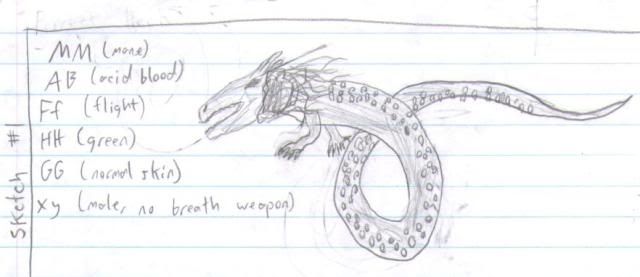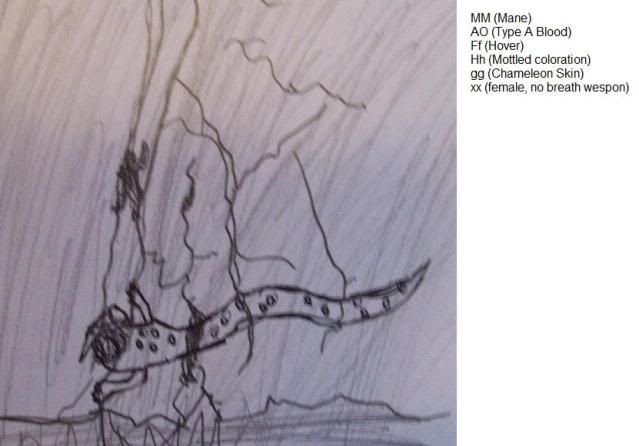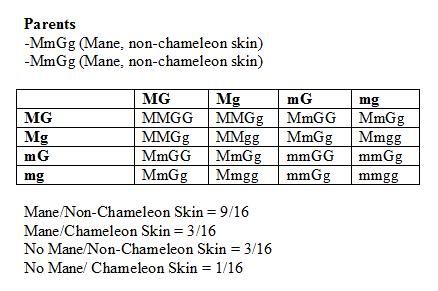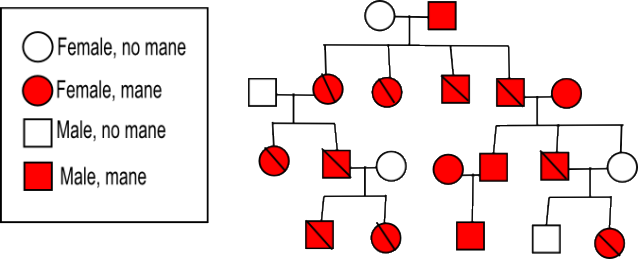Single-Allele Trait: ManeScientists are baffled as to what function this serves; it is just passed on.
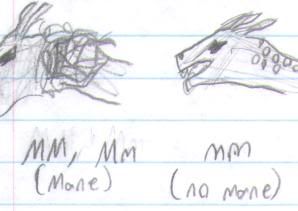 Single-Allele Trait: Chameleon Skin
Single-Allele Trait: Chameleon SkinIn reality, the word "chameleon" is not the correct description. This is a form of camouflage that allows the drake to blend in with its surroundings, not color-changing with emotions.
 Multiple Allele Trait: Blood Type
Multiple Allele Trait: Blood TypeThe hectonid drakes' blood types are perhaps their most interesting trait. The blood is similar to human blood with the same blood types, A, B, AB, and O. Type AB blood is highly acidic, and will eat through almost anything other than glass. The A and B types have no special properties on their own, but cannot mix; if you do mix A and B hectonid blood, the solution will explode. Type O blood is truly a universal donor. It has regenerative properties, and can be transfused from hectonids to almost any other species.
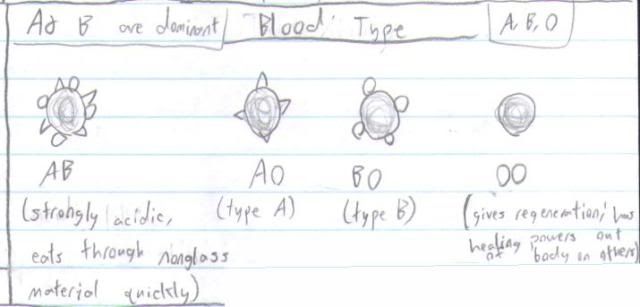 Codominant Trait: Coloration
Codominant Trait: ColorationHectonid drakes can be green or blue. When two different (but solidly) colored dragons mix, their offspring will have both colors. Individual scales are colored, so different patterns often emerge.
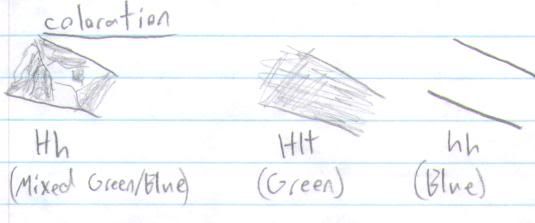 Sex-Linked Trait: Breath Weapon
Sex-Linked Trait: Breath WeaponThis is the most important trait in a colony, second only to flight. The fire breath itself is more of a flammable spit. All drakes possess a tongue that carries an electric charge, much like an electric eel, but fire-breathing hectonids are the only dragons to have a major use for it, as the shock isn't strong enough to be used when hunting. The fire-breathing drakes have sacs of a flammable chemical that they can expel from their mouths, igniting it with their tongues. When lit, the chemical resembles napalm as it sticks to everything and keeps burning. Once the sacs are discharged, it takes about 18 hours to "recharge" the flames.
Because the fire-breathers are so vital to the reproduction process, they stay in the nursery while other drakes hunt, allowing food to be brought to them.
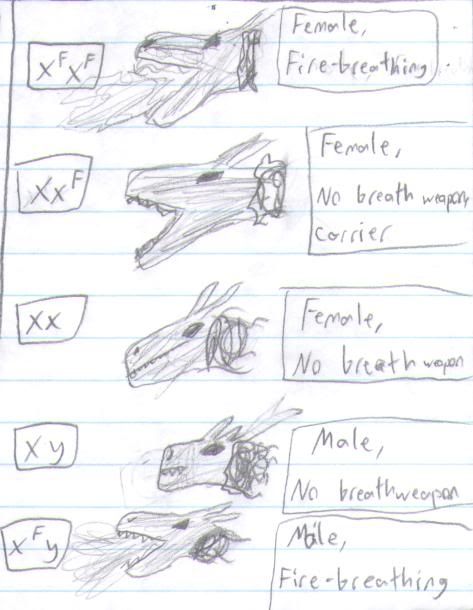 Incomplete Dominant Trait: Flight
Incomplete Dominant Trait: FlightThe most important trait to a colony, flying ability is an incomplete dominant trait. Those drakes that do fly do so using gas in their backs to compensate for their weight and make them lighter than air. Hovers don't have as many "balloons," so they can only compensate enough to move as if on the moon.

